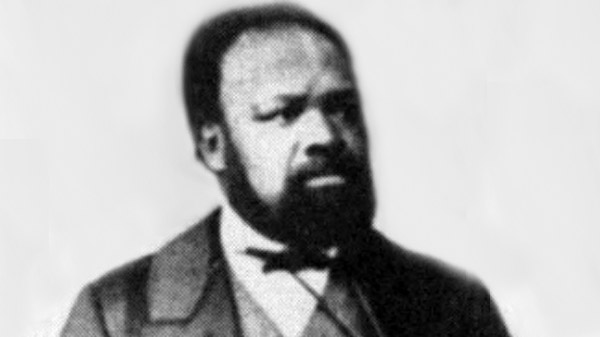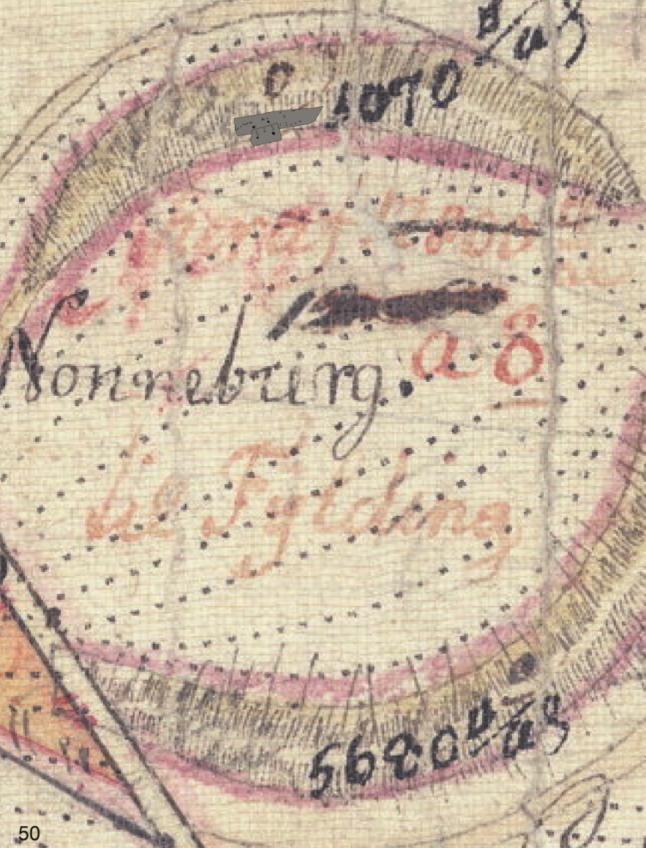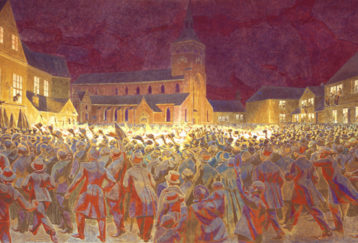
On 2 April 1867 Hans Christian Andersen celebrated his sixty-second birthday, and for once in his life, everything seemed to be coming up roses. He felt well, his career was flourishing, and spring was in the air. To extend the feeling of ebullience, shortly after his birthday he went to Paris to see the Universal Exhibition which had recently opened there. As he said in The Story of my Life, »People from all lands were streaming to it. Fata Morgana’s castle had been reared on the Champs de Mars, which had been transformed into the most beautiful garden. I must go there and see the fairy tale of our time[1]«. Accordingly he took the train to Paris on April eleventh. When he arrived he discovered that the exhibition palace had been built but that construction continued. »The buildings about it, complete gardens laid out with canals, grottoes, and water-falls were in busy preparation. Every day one saw great progress. It all took possession of my soul« [pp. 546-547]. He went there nearly every day to see what changes had taken place; he also discovered to his delight that he met friends and acquaintances from all over the world. He had the pleasure of seeing once more King George of Greece whom he had known as a child and had entertained with his stories. Clearly the Exhibition was the place to see and be seen.
As he recorded in his daily diary[2], in letters to Dorothea Melchior[3] and Edvard Collin[4], and in his autobiography, Andersen also met the American-born tragedian Ira Aldridge and his wife at the Exhibition. »One day [Tuesday, 30 April] as I went out there, came an elegantly dressed lady with her husband, a negro. She addressed me in a mixed speech of Swedo-English-German. She was born in Sweden, but had lived abroad of late; she knew who I was from my portrait, she said, and introduced me to her husband, the famous actor, the negro Ira Aldridge, who was just now playing to the Parisians at the Odeon, where he took the role of Othello. I pressed the artist’s hand, and we exchanged some friendly words in English. I confess it gave me great pleasure that one of Africa’s gifted sons should greet me as a friend[5]«.

It was a meeting of two well known »personalities«. Each was famous beyond his own sphere, thanks to the circulation of photograph portraits and the efforts of the popular press, and the encounter of the very pale complected woman, her coal-black consort who was fashionably dressed in black caused people to stop and stare[6]. In fact the meeting of these »stars« was mentioned by Andersen’s young friend, a journalist named Robert Watt, in his correspondences from the Universal Exhibition which were published in Dagbladet[7].
Internationally celebrated for his naturalistic style of acting, Aldridge was then at the peak of his legendary career. In 1853 he had been awarded the Golden Medal for Art and Sciences (First Class) by the King of Prussia, an honor hitherto reserved for Baron Alexander von Humboldt (the scientist and explorer), Gasparo Luigi Pacifico Spontini (opera composer), and Franz Liszt (pianist and composer). That same year the young Franz Joseph, Emperor of Austria, had presented him with the Medal of Ferdinand. In 1858 the Duke of Saxe-Meinigen had bestowed on Aldridge the Golden Order of Service, and afterwards he had styled himself Chevalier Ira Aldridge, Knight of Saxony. At the time of his meeting Andersen, Aldridge was in the midst of a French tour which he had begun the year before when he played to packed houses at the Grand Theatre in Versailles. From there he had taken his company to dozens of French provincial theatres, where, as Aldridge says, »[I] received great applause for France, where the audiences are not at all noted for enthusiasm«.


Aldridge himself left no record of the encounter, but every serious biographical study of Aldridge[9] notes the meeting of Aldridge and Andersen. On the strength of Andersen’s record of the event, it has been assumed that Aldridge and his company of French actors were playing Othello at the Odeon. There is, however, apparently a flaw in Andersen’s notes. Although he said that Aldridge was appearing at the Odeon, not a single newspaper in Paris recorded his appearance in any scheduled performance in any of the various theatres of the city. During the period in question, half a dozen newspapers attest that La Vie Nouvelle by Paul Meurice was the featured attraction at the Odeon. Its run was broken for benefit performances for Mlle. Agar; otherwise, the run of La Vie Nouvelle continued uninterrupted.
From his correspondence with Claude Henri Rouget, editor of L’Orchestra in Paris, we know that Aldridge was in Montpellier on 17 April. From there he was scheduled to play in Toulon, Nice, and Marseilles; then he was to return to Paris[10]. While vacationing in Paris, he met Andersen on the thirtieth. From an entry in his sporadically kept diary, we know that Aldridge was in Boulogne on 9 May preparing for a Channel crossing for what was to be his last visit to his home in London[11]. During his short stay there, he received tempting invitations to play in his native land, but he chose instead to undertake another tour of Russia. He was, however, fatally stricken in Lodz, Poland, en route to St. Petersburg. From this tight itinerary, it is clear Aldridge had little opportunity to perform in Paris.
Aldridge had, however, certainly hoped to play before the brilliant crowds attracted to the Exhibition. In a hitherto unnoted letter to the well-known costumier Samuel May of London in which he thanked him for the sumptuous costumes he had designed especially for the French tour, Aldridge mentioned that he had been engaged to make his First appearance in Paris at the Exhibition[12].
When Andersen met the Aldridges in Paris on 30 April 1867, it is possible, even likely, that Aldridge was trying to arrange to have his French company perform at the Odeon, but because of the contrary evidence of the French newspapers, one must conclude that Andersen misunderstood the »Swedo-English-German« speech of Mrs. Aldridge, for the black tragedian certainly did not play Othello at the Odeon.


